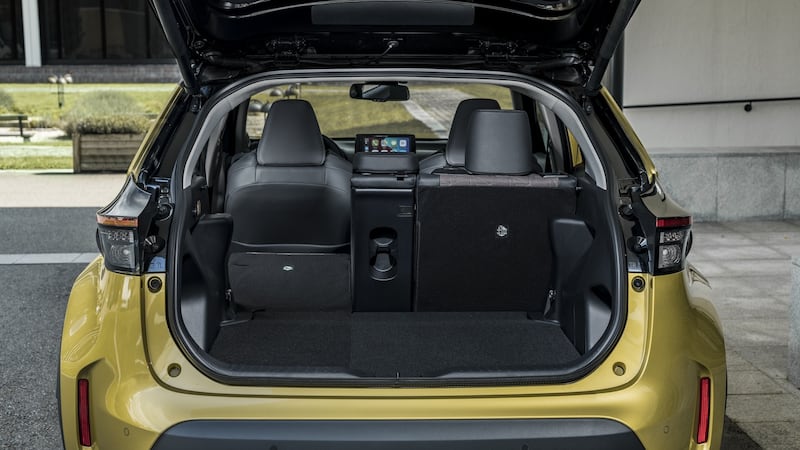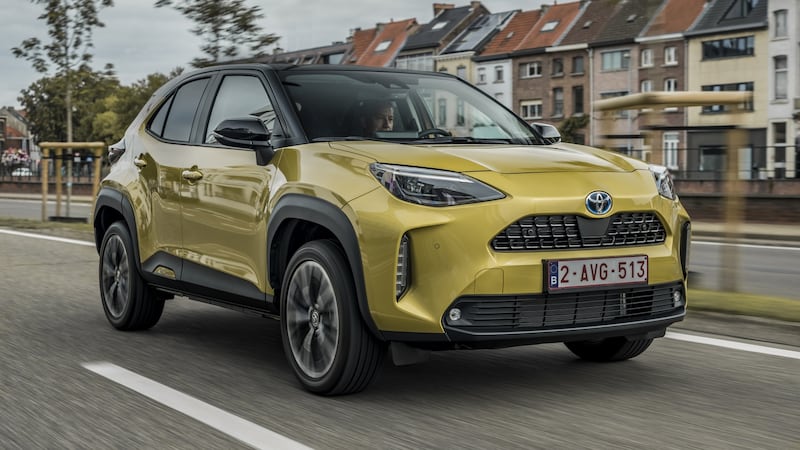We’ve all expanded a bit, I guess. Whether it’s lockdown lumps, or just careless dipping of the biscuit tin, there are not many of us who can claim to be smaller than we were before. That has had a knock-on effect on car manufacturing – as we have become larger, so too have cars grown to accommodate our bulk (as well as to house the hefty safety systems that help prevent us from harming ourselves).
Want a perfect illustration of this? Okay, the Ford Mondeo is bigger, way bigger, than the original Ford Granada. A Volkswagen Polo is larger than a first generation VW Golf. And this new Toyota Yaris Cross is the same size as a Mk1 Rav4.
I swear it’s true, in fact the Yaris Cross is a little larger than that 1995 original Rav4 in all dimensions except height. Toyota’s second-smallest car has begat a crossover that’s actually bigger than its one-time mid-range 4x4. If that doesn’t illustrate the mild madness of modern motoring, I don’t know what does.


What’s madder still is that the Yaris Cross is not even the longest or widest car in its class. That class – the compact crossover – was until very recently arguably the worst on sale, populated largely by cars sold entirely on their styling, rather than any sense that they were at all good to drive (largely, they were not) nor that they might actually be practical (largely, they were ditto).
Recently, though, cars such as the Seat Arona, the VW T-Cross, the Ford Puma, the second-generation Renault Captur, and the Peugeot 2008 have pulled the class socks up beyond knee level. Into that morass – and it's an ever-growing one; from accounting for 5.5 per cent of Irish car sales in 2012, the compact crossover class will this year take 12.1 per cent of all sales – comes the new Yaris Cross.
Trust
Unlike its rivals, Toyota has carried over the Yaris name to the new crossover, both because there is a strong mechanical familial link between the two (the same hybrid 1.5 petrol engine, the same TNGA-B platform) but also because it wants prospective customers to instantly trust the new vehicle. And trust the ever-reliable Yaris they mist certainly do.
It doesn’t look much like a Yaris, though. Appropriately, given its size, the Yaris Cross looks much more like a shrunken Rav4, especially around the rear three-quarters. Not a bad thing that. It’s also far, far bigger than a Yaris inside. In spite of sharing the same wheelbase as the hatchback, Toyota has carved out just-about adequate rear seat legroom, and a massive 397-litre boot. That’s more boot space than you’d find in a Toyota C-HR, a car that is €4,000 more expensive in base form. The Yaris Cross’ boot is also more versatile, with a multi-level, split-sides loading floor and the option of little stretchy seatbelts that hold your luggage or shopping firmly in place.


As with most Toyotas these days (pub quiz, name the exceptions) the Yaris Cross will be sold solely as a hybrid model, using the same 116hp petrol/batteries setup as the smaller Yaris hatch.
Underpowered? Not on this showing – although the roads near Toyota's European HQ in Brussels are tightly controlled and speed-limited, but the Yaris Cross feels suitably peppy, whether in basic front-wheel drive, or much more expensive four-wheel drive (with an extra 5kW electric motor to drive the rear wheels) forms. And 0-100km/h in 11.0 seconds is nothing much to boast about, but it feels more sprightly than that through the (non-existent; it's a CVT) gears, if a touch gruff when you accelerate hard.
Much more impressive is the fuel economy. On those slow Belgian roads, we averaged 3.7-litres per 100km. That’s 76mpg, for those still viewing in black and white. Better yet, we covered 67 per cent of our test route with the engine switched off, and only the electric half of the system providing thrust. Now, I have no doubt that Toyota carefully selected the test route to show off the Yaris’ powertrain to best advantage, but even so, that’s an impressive showing.
Toyota claims that, in town, the Yaris Cross can spend up to 80 per cent of its travel time on battery power, yet it undercuts the price tags of fully-electric rivals by some €4,000. The mathematics involved in deciding which makes for the better value might just boggle a few minds. The basic, front-wheel drive model as CO2 emissions of 100g/km (on 16-inch wheels), while the top spec AWD-i models see that figure rise to 116g/km.
To drive? Rather like the bigger Rav4, you can’t point to anything that’s individually brilliant in a dynamic sense – the steering is well-weighted, but too light for fun or accuracy; the ride is slightly over-firm; the handling nothing all that special – but it manages to, overall, feel somehow rather satisfying to drive. Solid, is perhaps the best way of describing it.
The interior, broadly lifted from the Yaris in terms of style, feels firmly well made, and top-spec models get a new nine-inch touchscreen infotainment system which – praise be! – is actually as good as that offered by rivals. Better, in some cases, especially the cloud-based sat-nav with its sharp, clear graphics. This marks the first time that a Toyota – any Toyota – has fielded a touchscreen that's comparable with its peers', although basic models get an older-tech eight-inch screen. At least all versions come with Apple CarPlay and Android Auto connectivity.
Prices start from €27,260 for a Luna model which comes with the eight-inch screen, 16-inch alloy wheels, a reversing camera, adaptive cruise control, and rain-sensing wipers. The top spec model, the Adventure, costs €36,770 in full-on four-wheel drive form, and gets a contrast black roof with roof bars, and chunky wheelarch styling to give it more of an off-road flavour (it’s only 25mm higher off the ground than a Yaris hatch, though, so don’t bother trying to tackle the Kalahari).
That pitches the Yaris Cross into Toyota showrooms, starting this October, priced very close to a basic Corolla, and as noted much more affordable than the cheapest C-HR. Will the panic for a 4x4 shape finally see the mighty Corolla deposed as Toyota Ireland’s bestselling model? It’s a long shot, but given our ever-expanding SUV appetite, don’t rule it out.
Lowdown: Toyota Yaris Cross 1.5 Hybrid Sol
Power: 1.5-litre petrol engine plus 59kW hybrid electric motor putting out 116hp and 120Nm (engine) plus 141Nm (motor) of torque with a CVT automatic transmission and front-wheel drive.
CO2 emissions (annual motor tax): 112g/km (€190).
L/100km (MPG): 5.2 (56.5).
0-100km/h: 11.2 seconds.
Price: €32,400 as tested. Yaris Cross starts from €27,260.
Verdict: A solid, talented entry to a burgeoning class.








